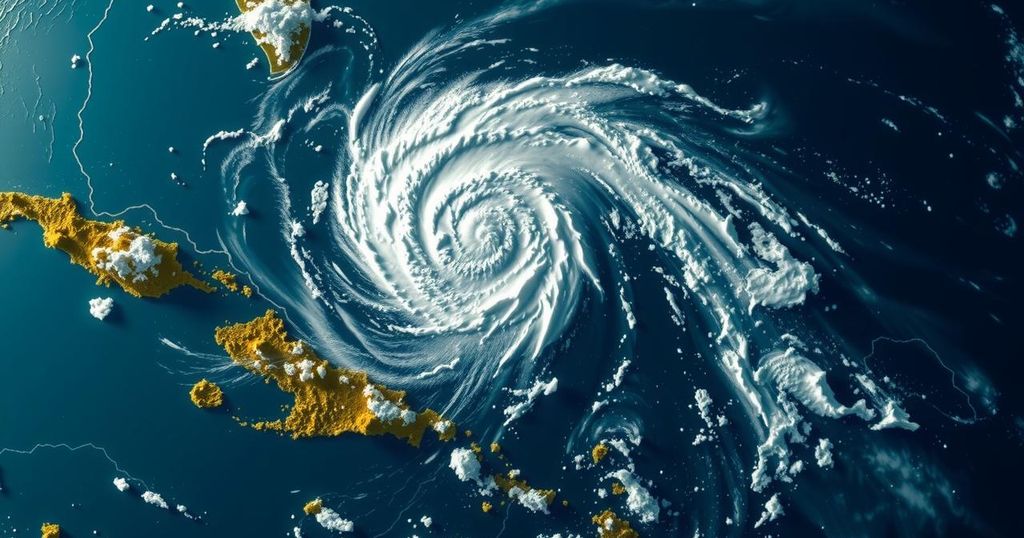Hurricane Rafael has rapidly weakened to a high-end tropical storm with sustained winds of 70 mph, moving west-northwest at 5 mph. Expected to turn towards Mexico, no significant impacts on the U.S. are anticipated except for possible rip currents. The National Hurricane Center is also monitoring an area of low development potential near the Leeward Islands.
As forewarned, Hurricane Rafael has experienced a rapid downgrade to a high-end tropical storm, with sustained winds now clocked at 70 miles per hour. The storm is currently traversing west-northwest at a sluggish pace of 5 miles per hour. The future trajectory of Rafael appears stable, with ongoing weakening expected and a notable shift towards Mexican territories anticipated by late weekend. It is important to note that no significant impact on the United States is expected, aside from possible rip currents along the coastal areas. Current statistics for Tropical Storm Rafael indicate its location at approximately 24.8 degrees North and 89.9 degrees West, which places it around 240 miles north of Progreso, Mexico, and approximately 460 miles east of the mouth of the Rio Grande. The storm’s minimum central pressure has been recorded at 989 millibars. Additionally, following Rafael, the National Hurricane Center is closely monitoring a region of thunderstorms located near the Leeward Islands. However, the likelihood of further development remains minimal, currently at only 10%. Continuous observation will proceed over the ensuing days to assess any changes in this situation.
The article discusses the recent transition of Hurricane Rafael into a tropical storm, which was accompanied by a decrease in wind speed and altered movement patterns. Such tropical systems undergo fluctuations in intensity, often leading to significant changes in their projected impact areas. The National Hurricane Center regularly monitors these developments to provide timely updates to the public about the storm’s status and potential hazards. The reference to low development odds near the Leeward Islands highlights ongoing vigilance for potential weather threats in the region.
In summary, Hurricane Rafael has weakly transitioned into a tropical storm, now characterized by sustained winds of 70 miles per hour and a slow west-northwest movement. The expected path indicates a shift towards Mexico, sparing the U.S. from major impacts. Meanwhile, the National Hurricane Center continues to observe other weather systems, maintaining a community-focused approach to disseminate crucial information. Public safety remains a priority as meteorologists keep watch over developing situations in the Atlantic region.
Original Source: www.alabamawx.com






